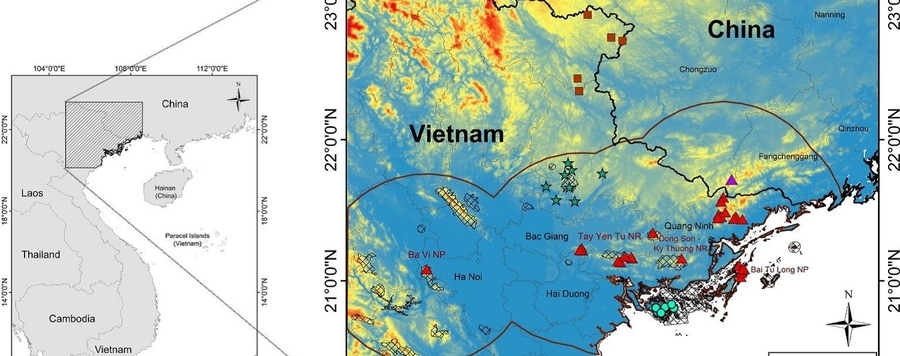
Modeling the environmental refugia of the endangered Lichtenfelder’s Tiger Gecko (Goniurosaurus lichtenfelderi) towards implementation of transboundary conservation
Climate change has potential effects on global biodiversity by shifting the optimal distribution of terrestrial organisms, particularly species with narrow distributions. Goniurosaurus lichtenfelderi, a forest-dwelling lizard, is found on both the island and mainland sites of northern Vietnam and southern China. The species is categorized as Vulnerable in the IUCN Red List and was recently listed in CITES Appendix II and the Vietnam Government’s Decree 06 in 2019 due to severe anthropogenic impacts on its populations. In this study, we employ Maxent species distribution modeling with climatic and vegetation cover data to identify the potential distribution of G. lichtenfelderi. We also used this approach to assess future climate impacts on the potential distribution under different climate change scenarios. Our model predicts that the potential distribution of G. lichtenfelderi will shrink significantly under future scenarios and even vanish in the entire study area under novel environmental conditions of the BCC-CSM 1-1 – RCP 8.5 scenario by the 2070s. Overall, the current potential distribution is expected to shift towards higher latitudes within the next decades. The forecasted maps provide useful guidelines to implement conservation strategies to mitigate synergistic impacts from climate change and other negative anthropogenic activities. In the context of the potentially severe impacts, the border areas between China and Vietnam, Yen Tu Mountain Range, Bai Tu Long National Park, and their surroundings should be considered core refugia for the species, where conservation measures need to be prioritized in the future.






